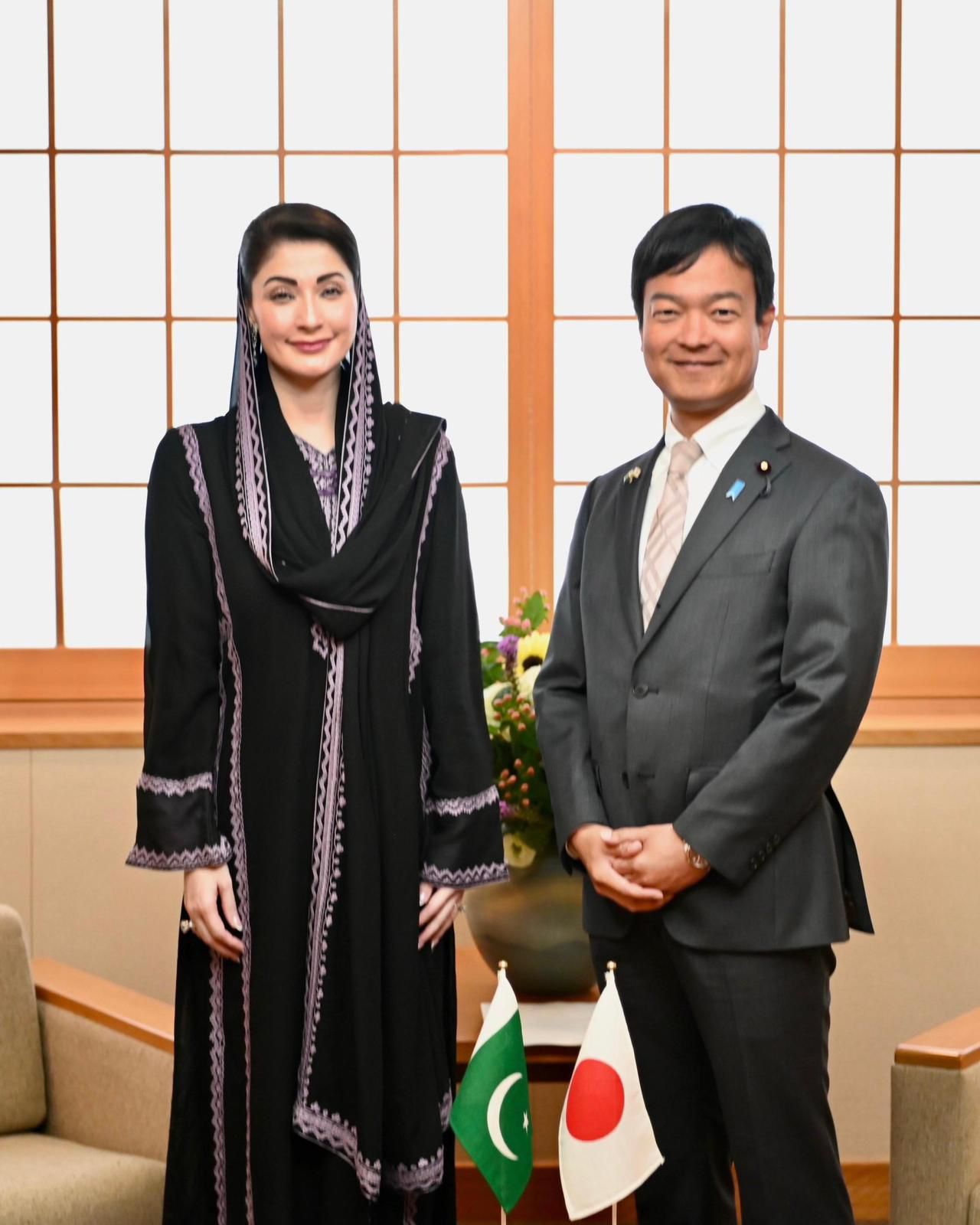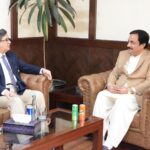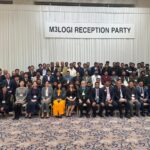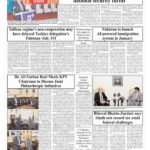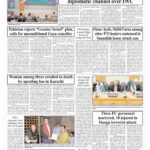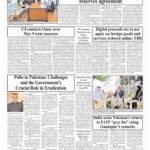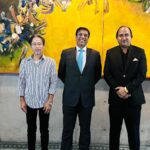By Muhammad Irfan Siddiqui, Tokyo, Japan
When the young Chief Minister of Punjab, Maryam Nawaz Sharif, set foot on Japanese soil, there was a distinct sense that something historic was unfolding. Her visit was not merely a ceremonial excursion. It was a carefully orchestrated journey into the heart of one of the world’s most sophisticated economies—a country that has transformed adversity into strength, and innovation into culture. For Punjab, her presence in Japan marked both recognition and renewal: recognition of her political stature and renewal of Pakistan’s longstanding friendship with Japan.
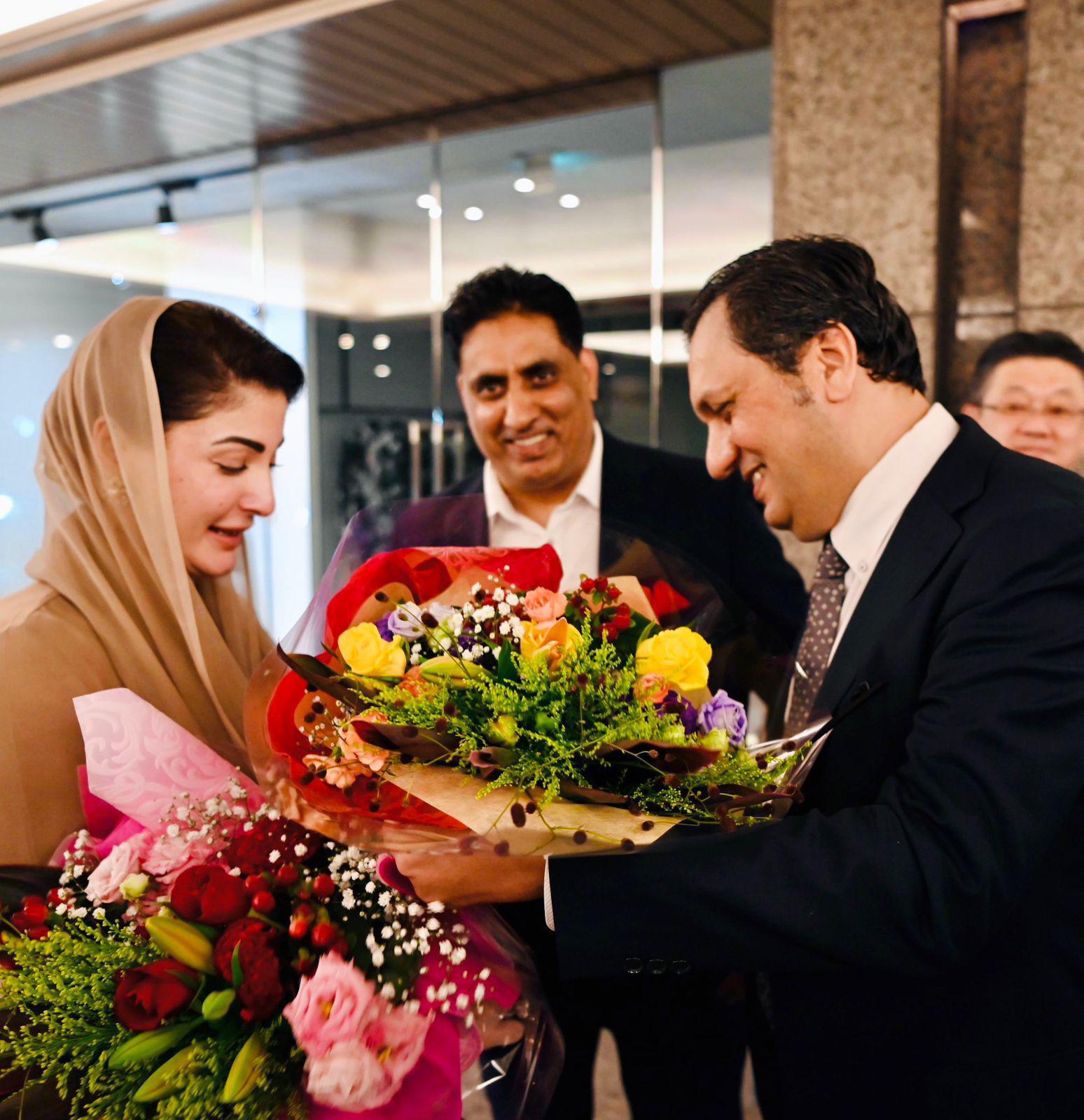
A Warm Welcome Amid Historic Backdrop
In Tokyo, the formal reception was not just about protocol. Japanese officials, seasoned diplomats, and economic leaders greeted Maryam Nawaz with warmth that reflected genuine curiosity and respect. Japan has always been cautious in extending state-level invitations, but their choice to host her underscored how seriously they view her leadership potential. The symbolism was clear: Maryam Nawaz is no longer just the daughter of a former prime minister, but an active political actor shaping the destiny of Punjab, Pakistan’s largest and most pivotal province.
Meeting with the Japanese Foreign Ministry
Her first round of official meetings took place at Japan’s Ministry of Foreign Affairs, where she met Takuma Miyaji, Senior State Minister for Foreign Affairs. The discussions were detailed and forward-looking, covering trade, technology transfer, and cultural cooperation. Maryam Nawaz stressed the importance of Japanese investment in Punjab’s renewable energy sector and outlined her government’s vision to transform Punjab’s urban centers into “Future Cities,” modeled on Japan’s fusion of heritage and modernity.
The Japanese hosts were equally enthusiastic. They acknowledged Punjab’s demographic weight—over 120 million people—as a market full of promise for Japanese companies in sectors like agriculture technology, green energy, and transport infrastructure.
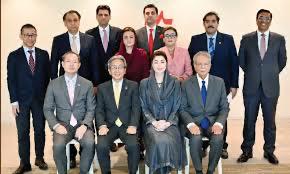
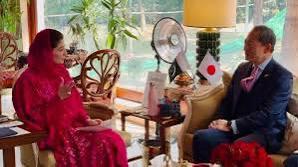
Engagement with JETRO: Investment as Diplomacy
One of the most anticipated moments of her trip was her engagement with Norihiko Ishiguro, President of the Japan External Trade Organization (JETRO). The meeting was described by Japanese business circles as unusually vibrant. Maryam Nawaz spoke less like a politician and more like an economic ambassador. She emphasized Punjab’s reforms in ease of doing business, transparency, and digital governance.
JETRO’s leadership, in turn, highlighted how Japanese companies—renowned for discipline and quality—could find fertile ground in Punjab’s industrial zones. In particular, sectors such as textiles, automobiles, and information technology were seen as natural bridges. Maryam Nawaz underscored that Punjab’s youth bulge, with millions entering the workforce each year, could become Japan’s partner in the global value chain.
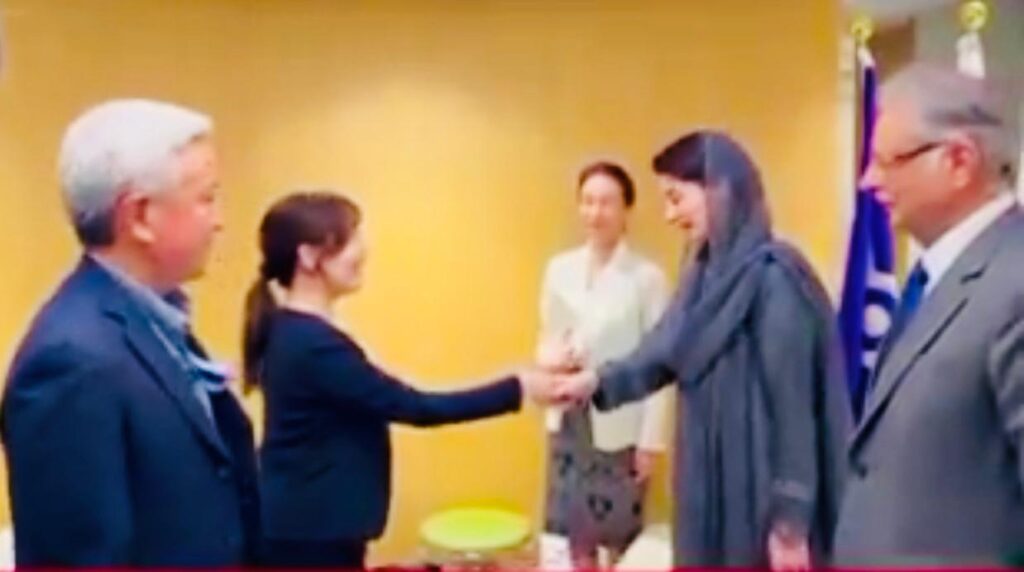
At the Osaka World Expo 2025
If Tokyo represented diplomacy, Osaka represented vision. Maryam Nawaz’s arrival at the World Expo 2025 site was a symbolic reminder that nations are judged not only by their challenges but by their aspirations. At the Pakistan Pavilion, themed around “Pink Salt and Sustainable Futures,” she was welcomed by Pakistani expatriates and Japanese visitors alike.
Her tour of the Expo grounds revealed her ability to connect the local with the global. She admired Japan’s futuristic exhibits showcasing robotics, healthcare technology, and climate-resilient agriculture. More importantly, she reflected publicly on how Punjab could adopt similar innovations to confront its own climate vulnerabilities—flood management, crop resilience, and smart urban planning.
At the Pakistan Pavilion, her interaction with overseas Pakistanis was deeply emotional. She assured them that their sacrifices and remittances are the lifeblood of Pakistan’s economy. The expatriate community, in return, responded with slogans of support, a reminder that diaspora diplomacy is often the most authentic form of soft power.
The Human Touch: Meeting the Community
Beyond official meetings, Maryam Nawaz made time to connect with the Pakistani community in Yokohama and Osaka. These sessions were not scripted photo-ops. She listened to concerns ranging from PIA’s discontinued flights to Punjab’s driving license recognition issues in Japan. By addressing these practical matters, she sent a signal: leadership is not only about big policy but also about solving everyday problems of citizens abroad.
This human-centric approach struck a chord. Japanese media noted her accessibility, contrasting it with the often aloof demeanor of many visiting leaders. For expatriates, it was reassurance that they are not forgotten once they leave homeland soil.

Echoes of Punjab’s Development Agenda
Throughout the trip, one theme was constant: Punjab’s development. Whether in boardrooms or Expo halls, Maryam Nawaz projected Punjab as an emerging hub for technology, agriculture modernization, and women’s empowerment. She spoke passionately about her “Future Cities Program”, where urban areas will be redesigned for efficiency, sustainability, and inclusivity.
She highlighted progress in healthcare digitization, universal health cards, and education reforms aimed at aligning Punjab’s youth with global job markets. In meetings with Japanese educationists, she proposed partnerships to bring Japan’s vocational training models into Punjab’s technical institutes.
On women’s empowerment, she pointed to her administration’s initiatives for women entrepreneurs, arguing that a modern Punjab cannot rise by leaving half its population behind. The Japanese audience, accustomed to debates about gender equity in their own society, responded with appreciation.

Strategic Impact
Beyond the headlines, what does this visit mean? Diplomatically, it places Maryam Nawaz in a new league of regional leaders who are not confined to national boundaries but think globally. For Japan, it reaffirmed Pakistan’s role not just as a South Asian state but as a strategic partner at the crossroads of Asia. For Punjab, it opened windows of investment, technology, and cultural exchange that could shape the next decade.
The Japanese have a word—“Kaizen”—which means continuous improvement. In many ways, Maryam Nawaz’s visit echoed this spirit. She framed Punjab not as a land of problems but as a land of possibilities, seeking Japanese expertise to refine and uplift.
A Personal Reflection
As I observed her itinerary in Tokyo, Osaka, and Yokohama, what struck me most was her composure. She balanced the weight of high-level diplomacy with the warmth of community connection. In Japanese tea ceremonies, every movement is precise, every gesture deliberate. Maryam Nawaz’s conduct during this visit carried the same precision—measured, thoughtful, and dignified.
Her Japan visit was more than diplomacy; it was narrative-building. It told the world that Punjab is ready for transformation, and that its leadership is willing to learn from the best. It also told Pakistanis abroad that they are not forgotten.
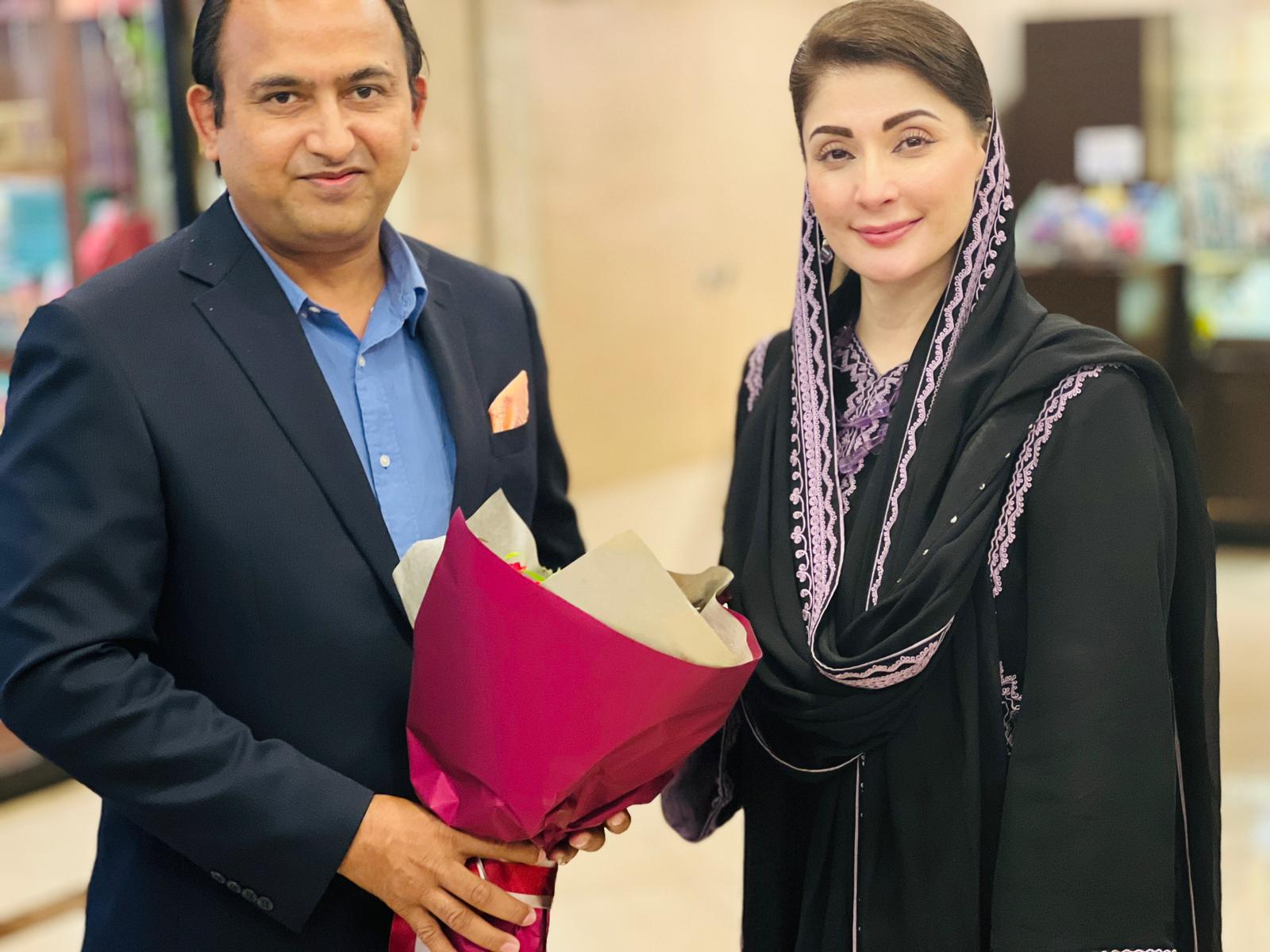
Conclusion
In a world where politics often feels like noise, Maryam Nawaz’s visit to Japan was a melody—calm, composed, and full of promise. She left behind not only signed agreements and press releases but also an impression that Punjab is entering a new chapter.
Her journey through Tokyo’s ministries, JETRO’s halls, Expo’s futuristic exhibits, and community gatherings was a story of bridging worlds—Pakistan with Japan, Punjab with technology, and leadership with empathy.
If diplomacy is an art, then Maryam Nawaz’s Japan visit was a masterstroke: a blend of vision, humility, and resolve. And for Punjab, it may well be the beginning of an era where dreams of progress travel not only across provinces but across oceans.

